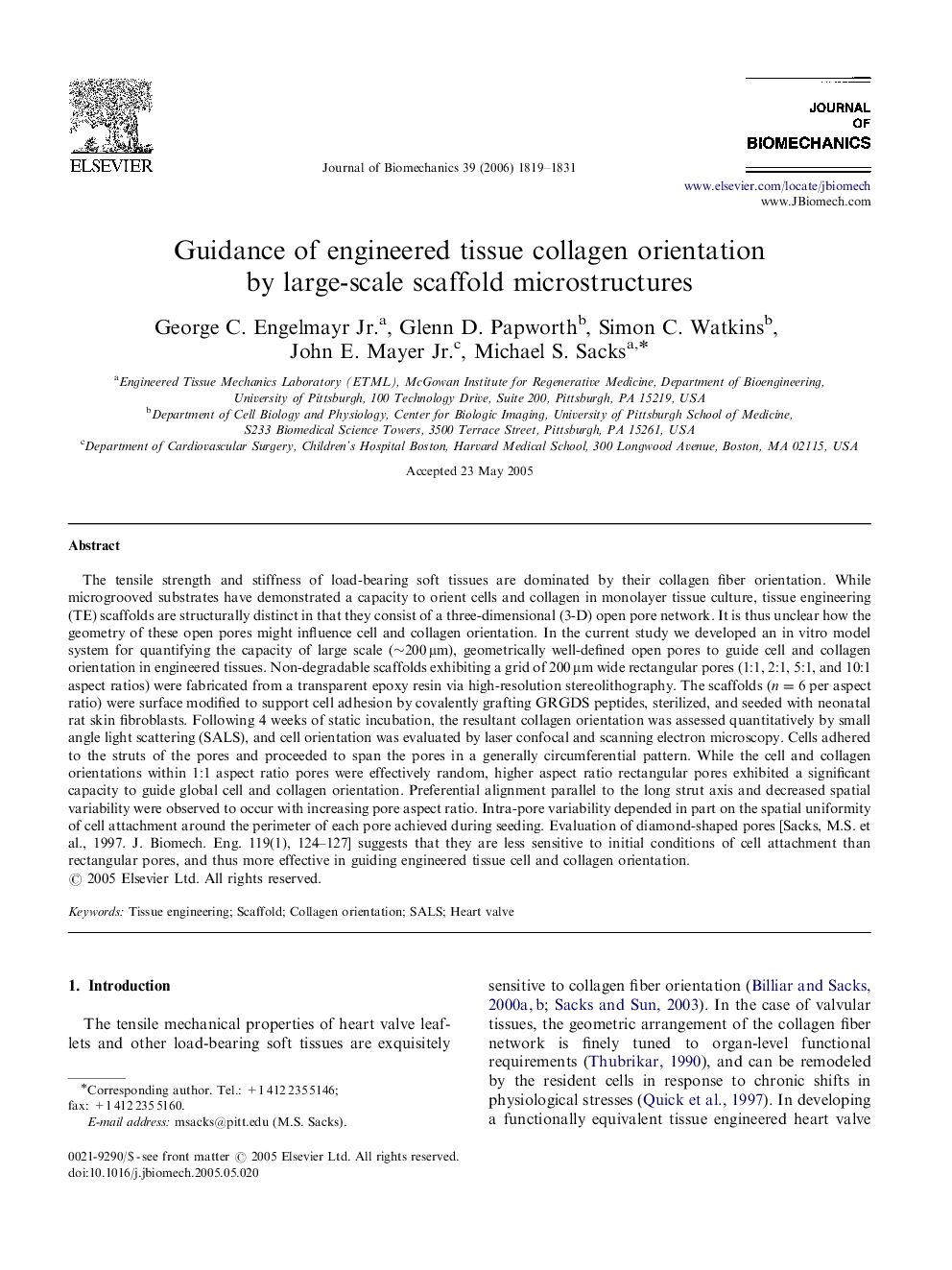| کد مقاله | کد نشریه | سال انتشار | مقاله انگلیسی | نسخه تمام متن |
|---|---|---|---|---|
| 874827 | 910351 | 2006 | 13 صفحه PDF | دانلود رایگان |

The tensile strength and stiffness of load-bearing soft tissues are dominated by their collagen fiber orientation. While microgrooved substrates have demonstrated a capacity to orient cells and collagen in monolayer tissue culture, tissue engineering (TE) scaffolds are structurally distinct in that they consist of a three-dimensional (3-D) open pore network. It is thus unclear how the geometry of these open pores might influence cell and collagen orientation. In the current study we developed an in vitro model system for quantifying the capacity of large scale (∼200 μm), geometrically well-defined open pores to guide cell and collagen orientation in engineered tissues. Non-degradable scaffolds exhibiting a grid of 200 μm wide rectangular pores (1:1, 2:1, 5:1, and 10:1 aspect ratios) were fabricated from a transparent epoxy resin via high-resolution stereolithography. The scaffolds (n=6n=6 per aspect ratio) were surface modified to support cell adhesion by covalently grafting GRGDS peptides, sterilized, and seeded with neonatal rat skin fibroblasts. Following 4 weeks of static incubation, the resultant collagen orientation was assessed quantitatively by small angle light scattering (SALS), and cell orientation was evaluated by laser confocal and scanning electron microscopy. Cells adhered to the struts of the pores and proceeded to span the pores in a generally circumferential pattern. While the cell and collagen orientations within 1:1 aspect ratio pores were effectively random, higher aspect ratio rectangular pores exhibited a significant capacity to guide global cell and collagen orientation. Preferential alignment parallel to the long strut axis and decreased spatial variability were observed to occur with increasing pore aspect ratio. Intra-pore variability depended in part on the spatial uniformity of cell attachment around the perimeter of each pore achieved during seeding. Evaluation of diamond-shaped pores [Sacks, M.S. et al., 1997. J. Biomech. Eng. 119(1), 124–127] suggests that they are less sensitive to initial conditions of cell attachment than rectangular pores, and thus more effective in guiding engineered tissue cell and collagen orientation.
Journal: Journal of Biomechanics - Volume 39, Issue 10, 2006, Pages 1819–1831